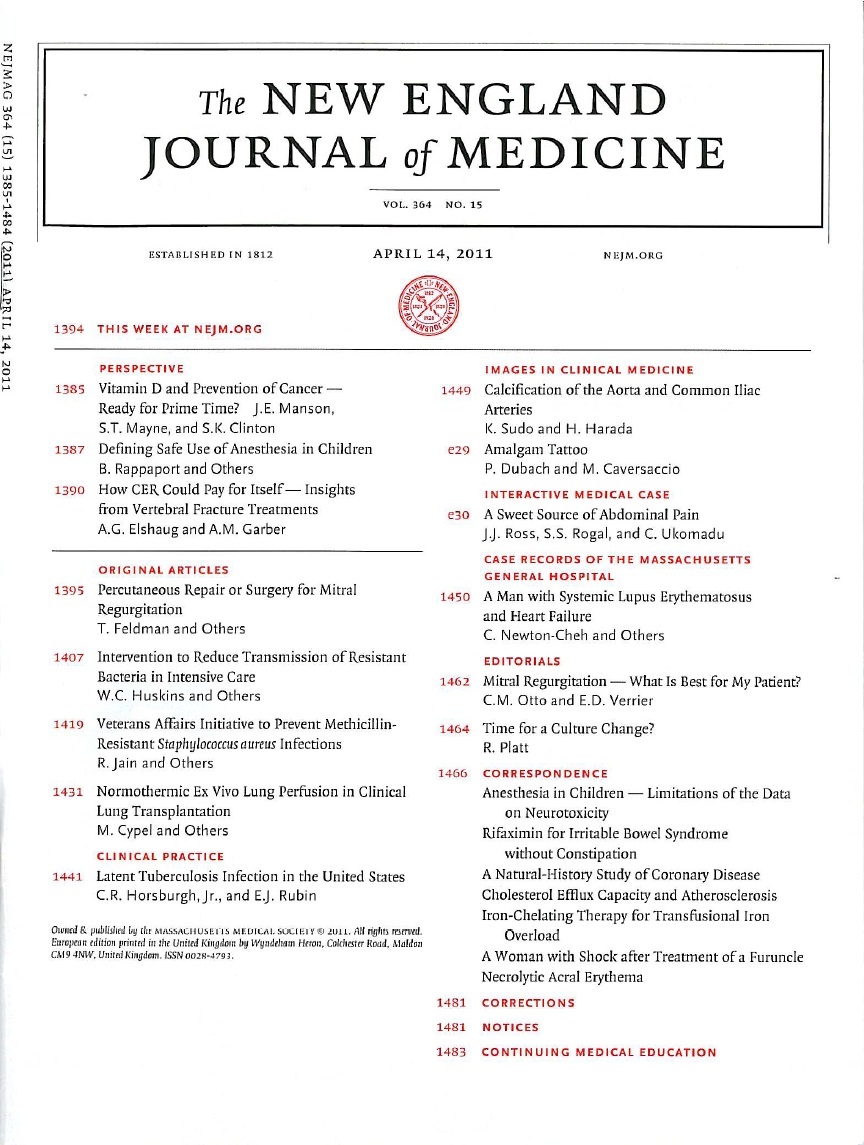
Early surgery in sciatica patients results in improved pain relief and perceived recovery

Early surgery in sciatica patients results in improved pain relief and perceived recovery
Surgery versus Prolonged Conservative Treatment for Sciatica
N Engl J Med. 2007 May 31;356(22):2245-56Did you know you're eligible to earn 0.5 CME credits for reading this report? Click Here
OE EXCLUSIVE
Dr. Wilco Peul discusses early surgery versus prolonged conservative treatment for sciatica.
Synopsis
283 patients with disc herniation and resulting sciatica were randomized to either receive early surgery or prolonged conservative treatment for 6 months (followed by surgery if needed). The results indicated that for both groups, similar outcomes were observed at the one year follow up period. However it is important to note that those in the early surgery group demonstrated faster rate of pain relief and perceived recovery, and thus may render this treatment method a valid and supported option.
Was the allocation sequence adequately generated?
Was allocation adequately concealed?
Blinding Treatment Providers: Was knowledge of the allocated interventions adequately prevented?
Blinding Outcome Assessors: Was knowledge of the allocated interventions adequately prevented?
Blinding Patients: Was knowledge of the allocated interventions adequately prevented?
Was loss to follow-up (missing outcome data) infrequent?
Are reports of the study free of suggestion of selective outcome reporting?
Were outcomes objective, patient-important and assessed in a manner to limit bias (ie. duplicate assessors, Independent assessors)?
Was the sample size sufficiently large to assure a balance of prognosis and sufficiently large number of outcome events?
Was investigator expertise/experience with both treatment and control techniques likely the same (ie.were criteria for surgeon participation/expertise provided)?
Yes = 1
Uncertain = 0.5
Not Relevant = 0
No = 0
The Reporting Criteria Assessment evaluates the transparency with which authors report the methodological and trial characteristics of the trial within the publication. The assessment is divided into five categories which are presented below.
3/4
Randomization
2/4
Outcome Measurements
4/4
Inclusion / Exclusion
4/4
Therapy Description
4/4
Statistics
Detsky AS, Naylor CD, O'Rourke K, McGeer AJ, L'Abbé KA. J Clin Epidemiol. 1992;45:255-65
The Fragility Index is a tool that aids in the interpretation of significant findings, providing a measure of strength for a result. The Fragility Index represents the number of consecutive events that need to be added to a dichotomous outcome to make the finding no longer significant. A small number represents a weaker finding and a large number represents a stronger finding.
Why was this study needed now?
Sciatica resulting from a herniated disc causes radiating pain down the leg. In Western countries, the incidence of sciatica per year is about 5/1000 adults, and this disorder has a large effect on the economy. With regards to cost of hospital care, disorders of the lumbar spine are in the top 5 of disease categories, and also cause increased lost work time and disability. It is widely accepted that surgery should only be performed if conservative treatment has not been successful in reducing symptoms. However, the optimal length of conservative treatment required before surgery is unknown.
What was the principal research question?
In patients presenting with severe sciatica, is earlier surgery more effective in improving outcomes than prolonged conservative treatment, measured over a one year period?
What were the important findings?
- Over the 52 week follow up period, there were no significant differences between both groups with respect to the Roland Disability Questionnaire (p=0.13).
- Those who underwent early surgery had a significant decrease in leg pain compared to the prolonged conservative treatment group (p<0.001).
- During the first 36 weeks, a faster rate of perceived recovery was observed in the early surgery group (hazard ratio 1.97, 95% CI 1.72 to 2.22, p<0.001).
- After 52 weeks, both groups had similar recovery rates of 95%.
What should I remember most?
At the one year period, both the group undergoing early surgery, and those receiving conservative treatment reported similar outcomes. However, perceived recovery and pain relief were faster for those patients who underwent early surgery.
How will this affect the care of my patients?
Although both patients treated with early surgery and those who received conservative treatment (and eventual surgery if required) produced similar outcomes at one year, early surgery may be a viable option if patients cannot cope with the leg pain, want to reduce recovery time or do not wish to wait for natural recovery to occur. On the other hand, individuals whose pain is tolerable have the option to defer surgery until absolutely necessary. Further high-quality evidence is required to substantiate these findings.
Learn about our AI Driven
High Impact Search Feature
Our AI driven High Impact metric calculates the impact an article will have by considering both the publishing journal and the content of the article itself. Built using the latest advances in natural language processing, OE High Impact predicts an article’s future number of citations better than impact factor alone.
Continue



 LOGIN
LOGIN

Join the Conversation
Please Login or Join to leave comments.